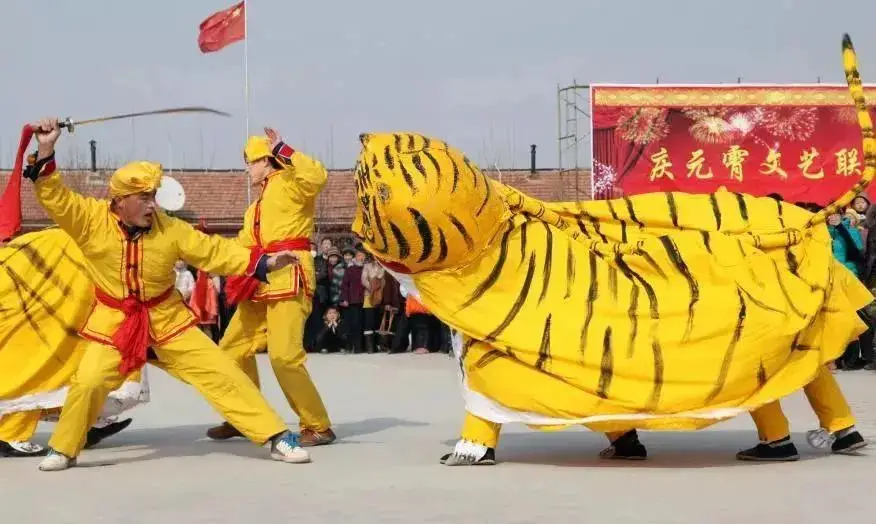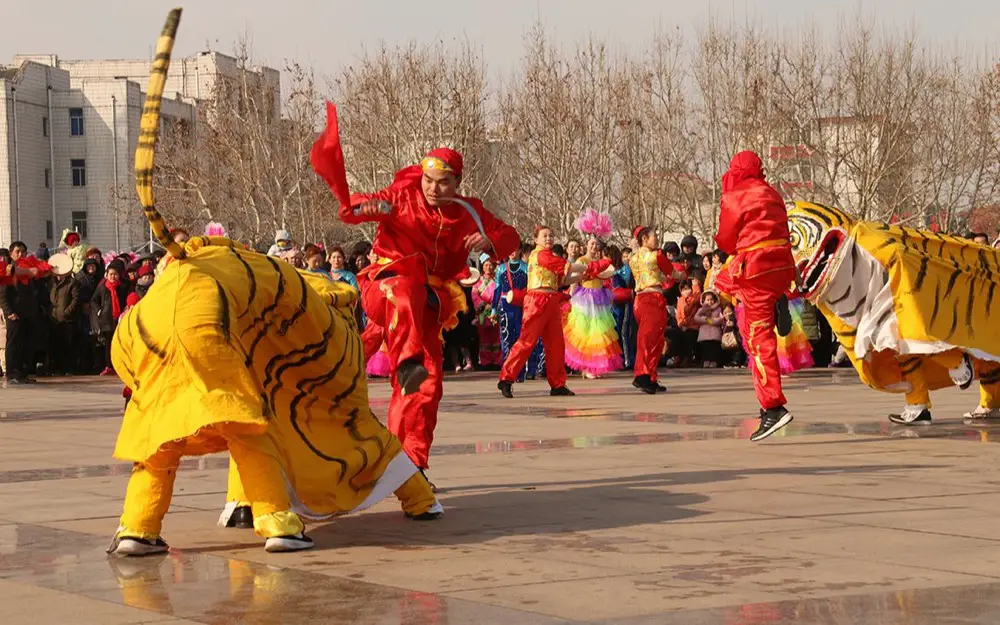“Yandaodouhu,” also known as “Salt Pile Tiger Dance” or “Tiger Fighting,” derives its name from choreographing a set of dance movements imitating the actions of a tiger, such as pouncing, leaping, biting, cutting, rushing, and slapping. Each tiger is portrayed by two performers, while four heroic figures lead the tigers in a dance performance within the arena. The four tigers run, jump, roll, shake their heads, and wag their tails, presenting a variety of poses. The heroes, armed either bare-handed or with wooden sticks, playfully engage with the tigers, all set to the rhythmic beats of drums and gongs. This dance form is one of the ancient and distinctive cultural expressions originating from Yandaoduo Village in Shandong Province, China. Known for its unique performance style and techniques, it has become a significant representative of traditional Chinese culture and folk art.
The origins of Yandaodouhu can be traced back to ancient China when the tiger was considered a sacred animal symbolizing strength and courage. Over time, people began to express the image and characteristics of the tiger through dance, giving rise to the Yandaodouhu.

The performance of Yandaodouhu is distinctive, typically featuring two individuals portraying each tiger and another person as the hunter. The dance movements primarily imitate the form and actions of a tiger, incorporating actions such as pouncing, leaping, grabbing, biting, and more. Additionally, martial arts and acrobatic techniques are integrated, infusing the dance with strength and dynamism. Throughout the performance, dancers synchronize with the rhythms of percussion instruments, showcasing jumps, flips, and spins that convey the fierceness and power of a tiger.
In the course of history, Yandaodouhu faced the risk of fading away, but through efforts by local governments and cultural institutions, this dance form has been preserved and passed down. Today, Yandaodouhu has become an important cultural brand in the local area, attracting numerous visitors and audiences to witness its performances.

Yandaodouhu is not just a form of dance; it carries rich cultural significance and spiritual values. Through the performance of Yandaodouhu, one can experience the strength and courage of a tiger while conveying a sense of reverence and respect for the natural world. This dance form also reflects the traditional Chinese cultural pursuit of harmony, balance, and beauty, making it a radiant gem in traditional Chinese culture and folk art.
In conclusion, Yandaodouhu is an ancient and unique dance form that, through its distinctive performance style and techniques, portrays the strength and courage of a tiger. It is not just a performance but also a significant representative of traditional Chinese culture and folk art, embodying rich cultural connotations and spiritual values. In the present day, we should actively protect and inherit this precious cultural heritage, allowing it to shine brightly in the new era. Through our efforts, more people can come to understand and appreciate the uniqueness of Yandaodouhu, enabling it to sparkle on the global cultural stage.
